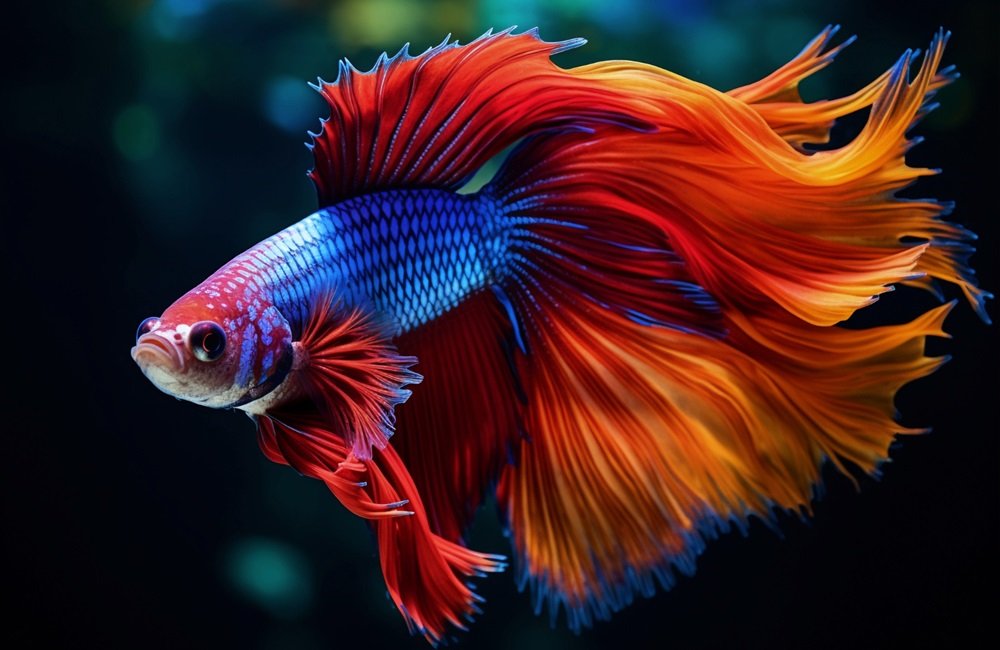Understanding the dietary needs of your pet fish is crucial for their health and well-being. Tetras, a popular choice for freshwater aquariums, are known for their vibrant colors and active swimming habits. Providing them with a balanced and appropriate diet is essential to ensure they thrive in their aquatic environment.
What Can Tetras Eat?
Tetras are omnivores, meaning they consume both plant and animal matter. Their natural diet in the wild consists of a variety of small organisms, including insects, crustaceans, and algae. In captivity, it’s important to replicate this diverse diet to keep your tetras healthy and happy.
Commercial Tetra Food
High-quality commercial tetra food is a staple in most tetra diets. These flakes, pellets, or granules are formulated to provide a balanced blend of nutrients, including protein, carbohydrates, and vitamins. Look for foods specifically designed for tetras or other small schooling fish.
Live and Frozen Foods
To supplement their commercial diet, tetras enjoy live and frozen foods. These options offer a more natural and enriching feeding experience. Some suitable choices include:
- Brine shrimp
- Bloodworms
- Daphnia
- Mosquito larvae
Plant Matter
While tetras primarily consume animal matter, they also benefit from occasional plant-based foods. Blanched vegetables like spinach, zucchini, or peas can be offered as treats. You can also include algae wafers in their diet to provide additional fiber and nutrients.
What Can Tetras Eat?
Tetras are a popular choice for aquarium enthusiasts due to their vibrant colors, active nature, and relatively easy care requirements. However, providing a balanced and nutritious diet is crucial for their health and well-being. Understanding what tetras can eat and how often to feed them is essential for keeping these fascinating fish thriving in your aquarium.
Understanding Tetra Diets
Tetras are omnivores, meaning they consume both plant and animal matter. In their natural habitats, they feed on a variety of foods, including insects, crustaceans, algae, and small plants. Replicating this diverse diet in a captive environment is key to ensuring your tetras receive all the necessary nutrients.
Commercial Tetra Food
High-quality commercial tetra food is a staple in most tetra diets. These foods are formulated to meet the specific nutritional needs of tetras and come in various forms, such as flakes, pellets, and granules. Look for foods that list protein as the first ingredient and contain a variety of ingredients, including: (See Also: Do Goldfish Fight Each Other)
- Protein sources: Fish meal, krill, shrimp, insects
- Carbohydrates: Wheat germ, corn, brown rice
- Vitamins and minerals: A, D, E, B complex, calcium, phosphorus
It’s important to choose a food that is appropriate for the size and species of your tetras. Smaller tetras may require smaller flakes or pellets, while larger species may benefit from larger granules.
Live and Frozen Foods
Live and frozen foods can provide valuable variety and enrichment to a tetra’s diet. These foods are more natural and often more appealing to tetras than commercial foods. Some good options include:
- Brine shrimp
- Daphnia
- Bloodworms
- Mysis shrimp
Live foods should be purchased from a reputable source and quarantined before being introduced to your aquarium to prevent the spread of disease. Frozen foods can be thawed in a separate container and rinsed before feeding.
Plant Matter
While tetras are primarily omnivores, they can also benefit from consuming plant matter. This can help to provide them with essential fiber and nutrients. Some good plant options include:
- Blanched spinach
- Cooked peas
- Sliced zucchini
- Algae wafers
It’s important to offer plant matter in moderation, as too much can lead to digestive issues.
Feeding Frequency and Amount
The frequency and amount of food you feed your tetras will depend on several factors, including their age, size, activity level, and the type of food you are providing.
As a general guideline, adult tetras should be fed twice a day, offering only as much food as they can consume in 2-3 minutes. Overfeeding can lead to water quality issues and health problems. (See Also: Can Betta Fish Eat Snails)
Young tetras, on the other hand, may need to be fed more frequently, up to three or four times a day.
It’s always best to err on the side of caution and underfeed rather than overfeed.
Signs of Overfeeding
Be aware of the following signs that your tetras may be overfed:
- Uneaten food accumulating at the bottom of the tank
- Fish exhibiting bloated or distended bellies
- Increased water cloudiness or foul odor
If you notice any of these signs, reduce the amount of food you are feeding your tetras or feed them less frequently.
Conclusion
Providing a balanced and nutritious diet is essential for the health and well-being of your tetras. By understanding what tetras can eat and how often to feed them, you can ensure that your fish thrive in your aquarium. Remember to offer a variety of foods, feed in moderation, and monitor your tetras for signs of overfeeding.
What Can Tetras Eat? – FAQs
What kind of food do tetras prefer?
Tetras are omnivores, meaning they eat both plant and animal matter. In their natural habitat, they consume a variety of small insects, crustaceans, worms, and algae. (See Also: How Do Betta Fish Act Before They Die)
What types of food can I feed my tetras?
You can provide your tetras with a balanced diet of flake food, pellets, and occasional treats like bloodworms, brine shrimp, or daphnia.
How often should I feed my tetras?
It’s best to feed your tetras small amounts twice a day. Avoid overfeeding, as this can lead to water quality issues and health problems.
Can I feed my tetras vegetables?
Yes, you can offer your tetras blanched vegetables like spinach, peas, or zucchini in moderation.
What should I avoid feeding my tetras?
Avoid feeding your tetras fatty or processed foods, as these can be harmful to their health. Also, avoid feeding them large pieces of food that they may have difficulty swallowing.


